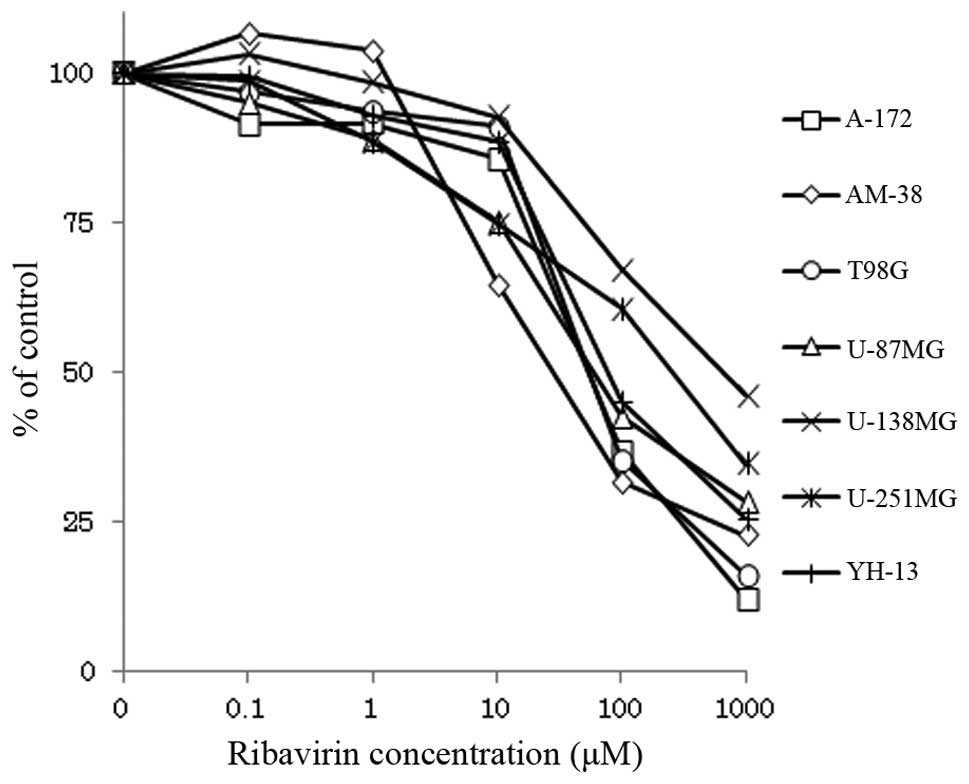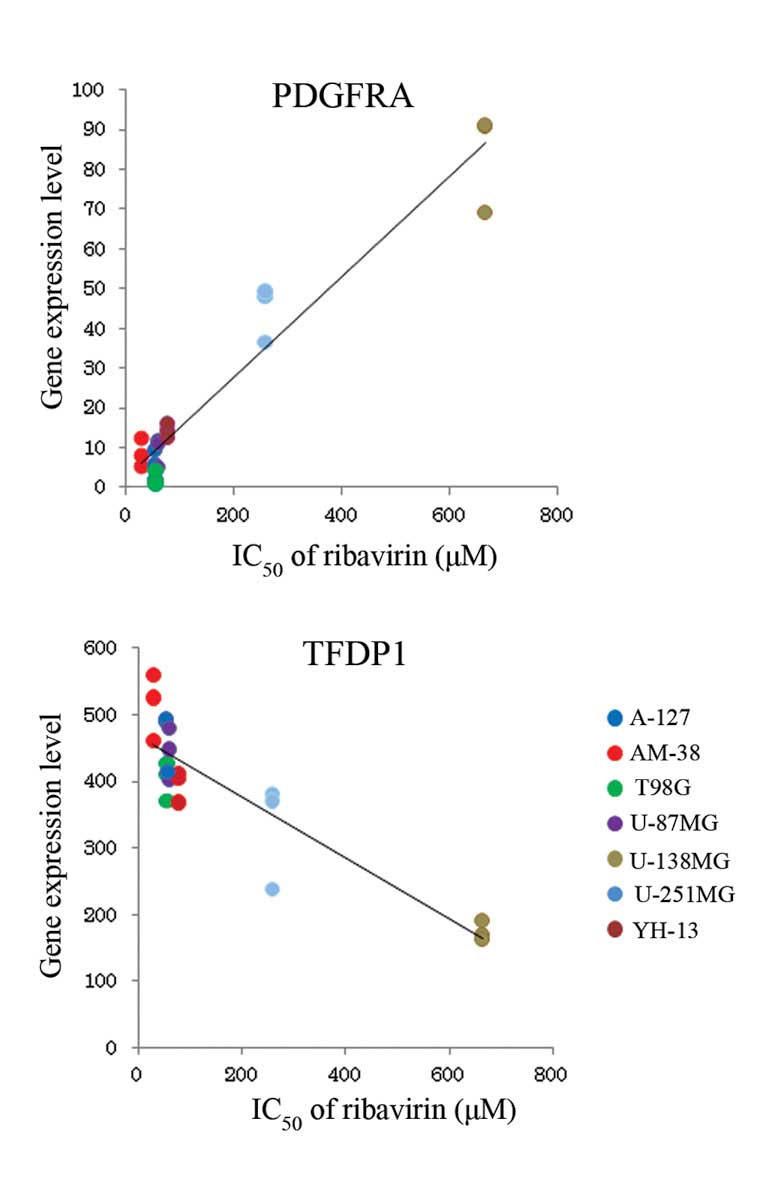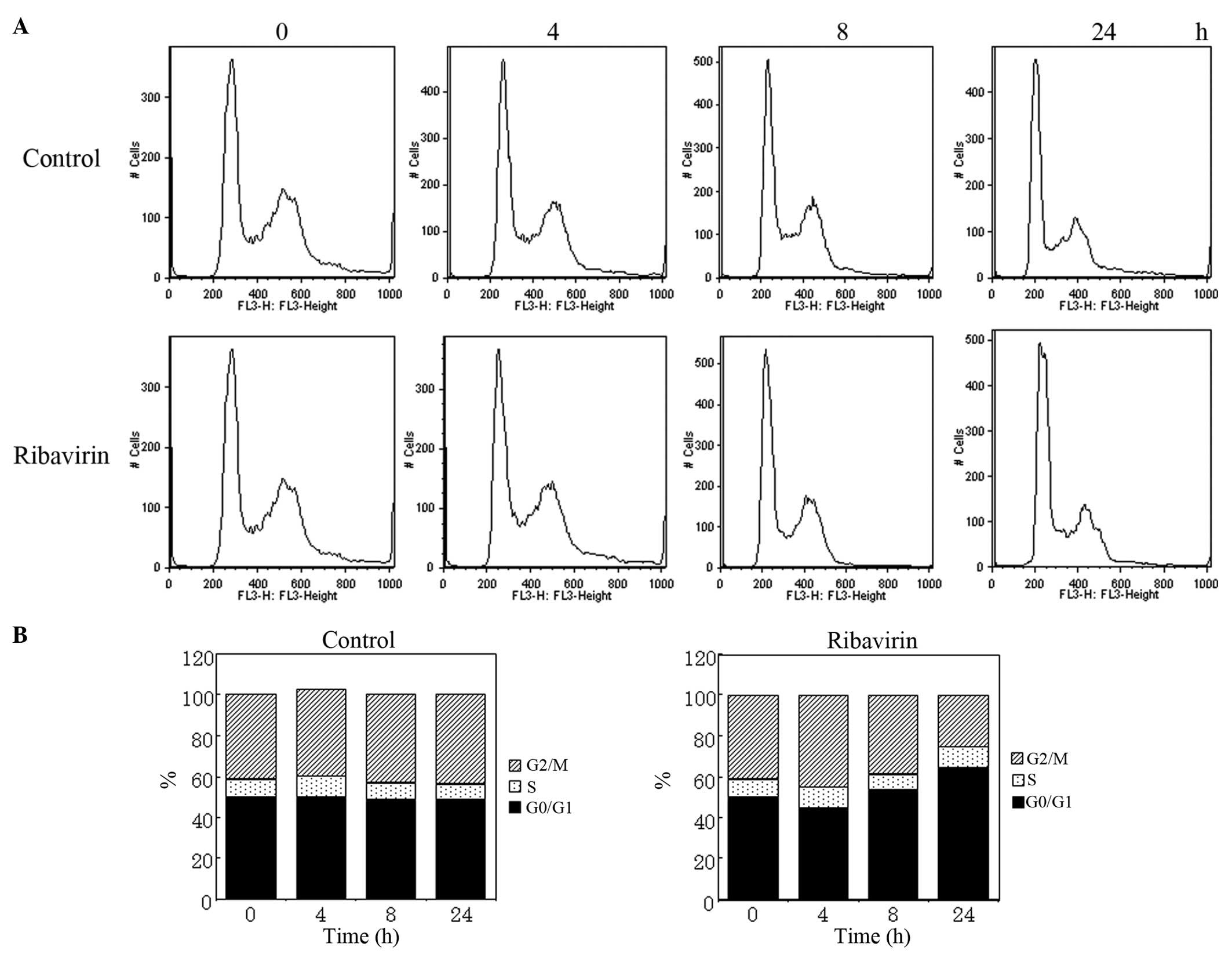Efficacy of ribavirin against malignant glioma cell lines
- Authors:
- Published online on: September 26, 2014 https://doi.org/10.3892/ol.2014.2569
- Pages: 2469-2474
Metrics: Total
Views: 0 (Spandidos Publications: | PMC Statistics: )
Total PDF Downloads: 0 (Spandidos Publications: | PMC Statistics: )
Abstract
Ribavirin (1‑β‑D‑ribofuranosy‑1,2,4‑triazole‑ 3‑carboxamide) has been widely administered as an antiviral agent against RNA and DNA viruses. Ribavirin, in combination with interferon, has predominantly been applied in the treatment of the hepatitis C virus infection and its potential antitumor efficacy has recently become a point of interest. The aim of the present study was to evaluate the effect of ribavirin on the growth of malignant glioma cells, to identify novel predictive genes in malignant glioma cells (by analyzing gene expression profiles) and to assess the influence of ribavirin on the cell cycle of malignant glioma cells. The present study evaluated the antitumor efficacy of ribavirin against various malignant glioma cell lines (A‑172, AM‑38, T98G, U‑87MG, U‑138MG, U‑251MG and YH‑13). After culturing the cells in ribavirin‑containing culture medium (final concentration, 0‑1,000 µM) for 72 h, the viable proliferated cells were harvested and counted. The half maximal inhibitory concentration of ribavirin, with regard to the growth of the malignant glioma cell lines, was determined from the concentration of ribavirin required for 50% growth inhibition in comparison to the untreated control cells. Furthermore, the current study identified the genes in which the gene expression levels correlated with the ribavirin sensitivity of the malignant glioma cells lines, using a high‑density oligonucleotide array. Finally, cell cycle analysis was performed on the U‑87MG cell line. It was identified that ribavirin inhibited the growth of all of the malignant glioma cell lines in a dose‑dependent manner, although the ribavirin sensitivity varied between each cell line. Of the extracted genes, PDGFRA demonstrated the strongest positive correlation between gene expression level and ribavirin sensitivity. Cell cycle analysis of the U‑87MG cell line demonstrated that ribavirin treatment induces G0/G1 arrest and thus may be an effective agent for inhibiting malignant glioma cell growth. Therefore, the results of the current study indicate that ribavirin may have potential as a therapeutic agent in the treatment of malignant gliomas.












